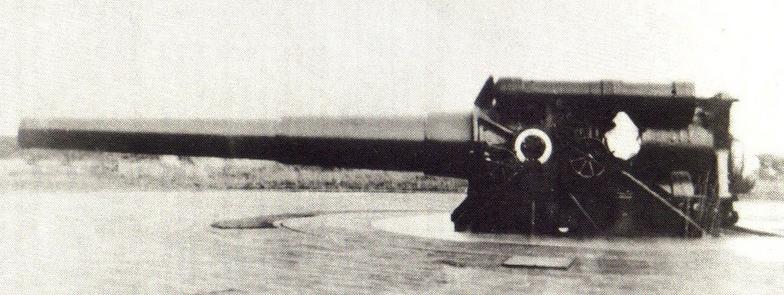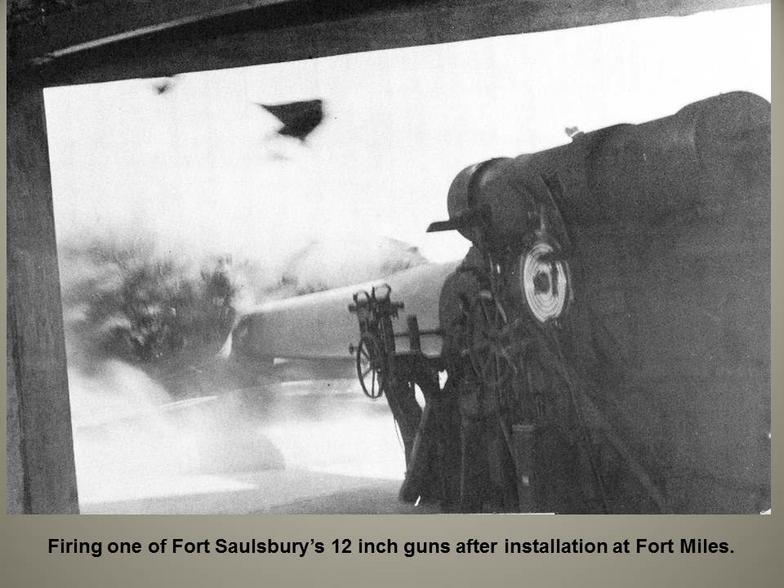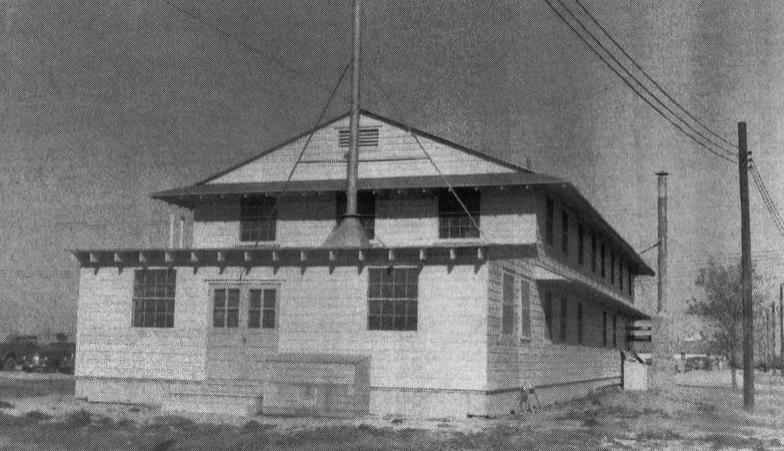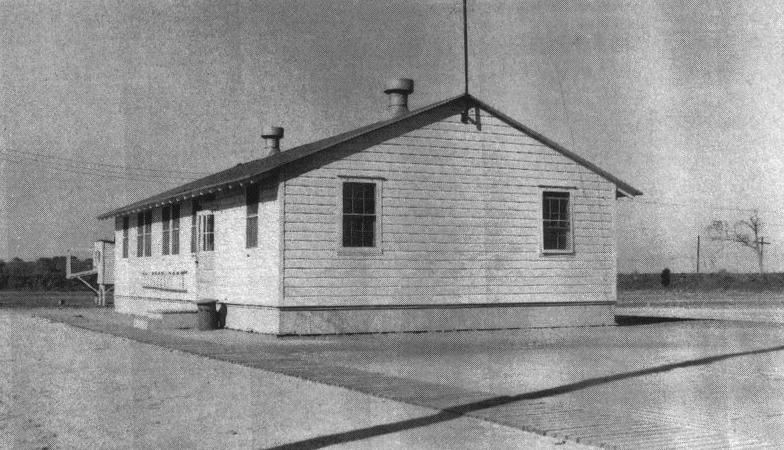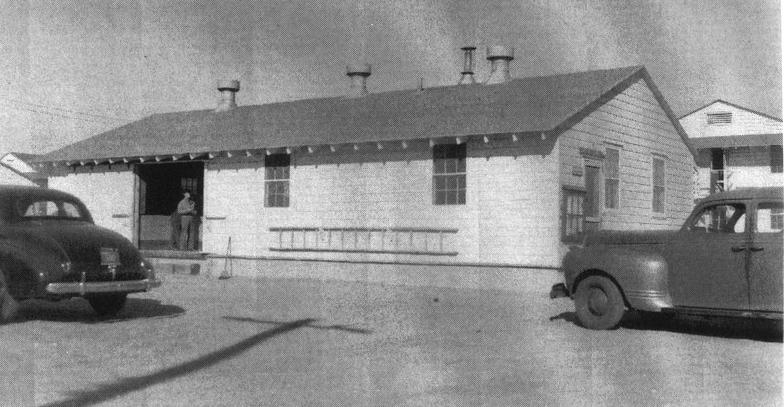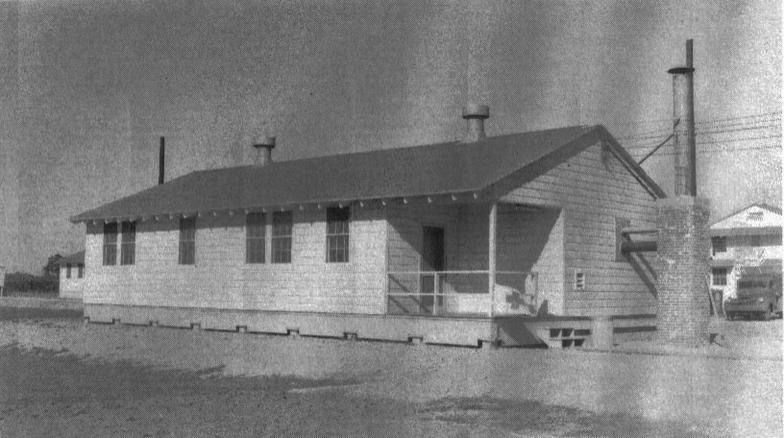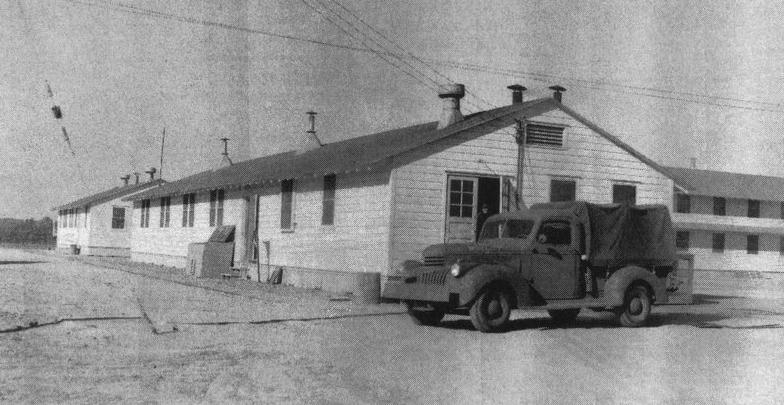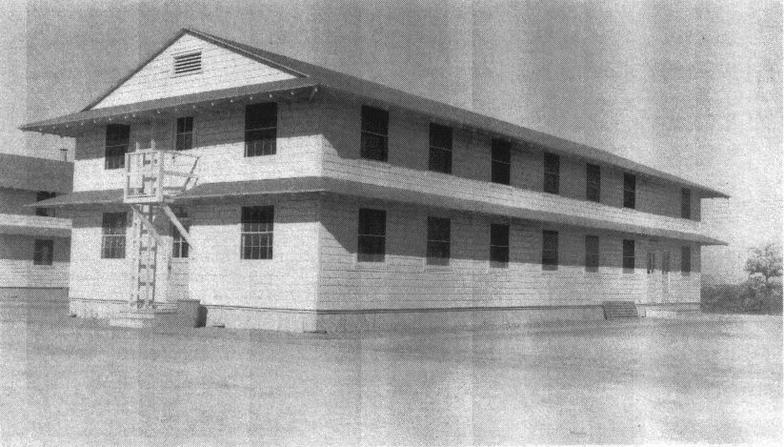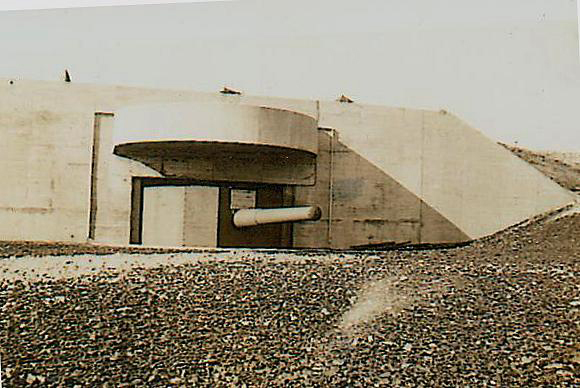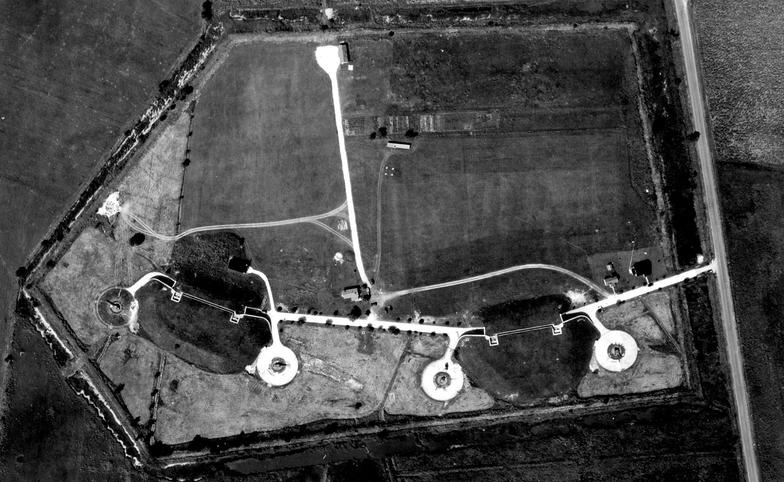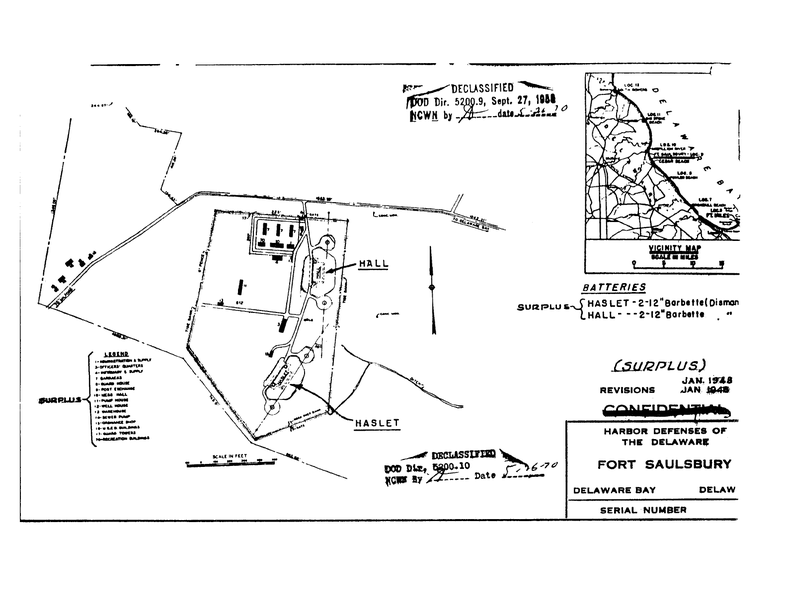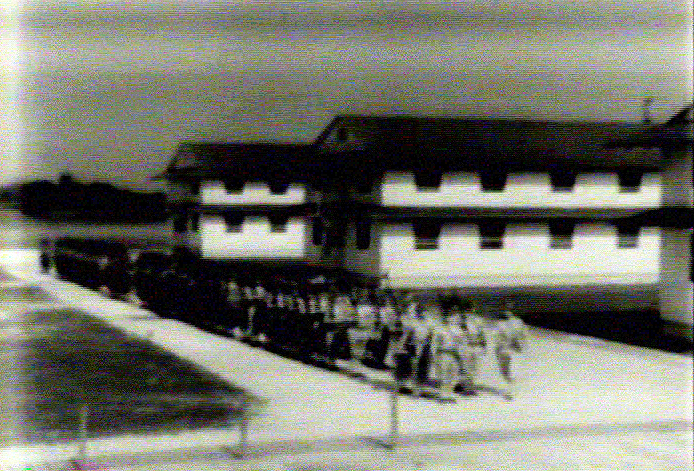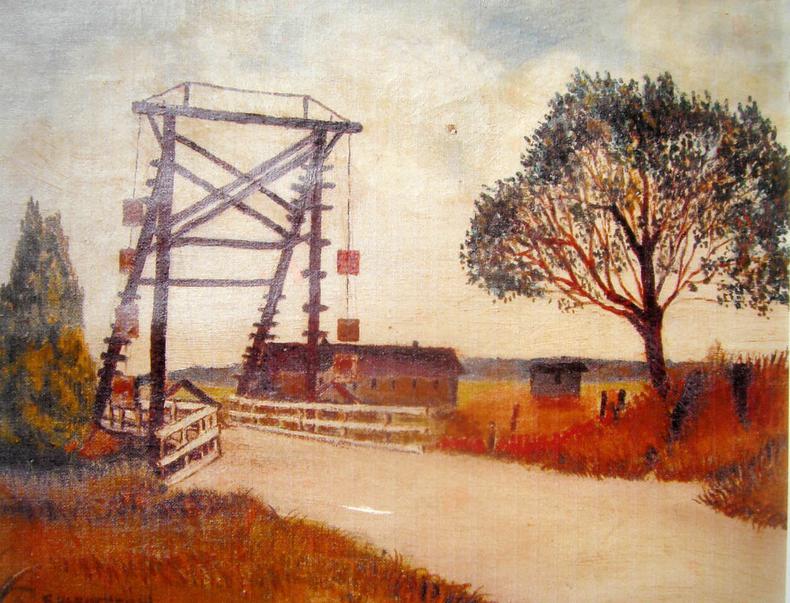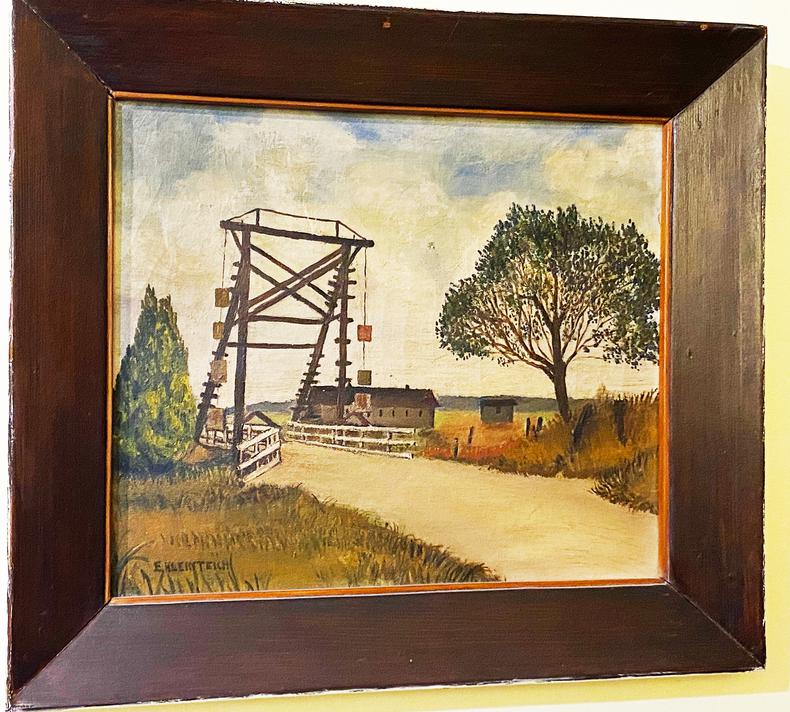Fort Saulsbury, DE
Delaware's Forgotten Fort
Under construction. This page will be about the fort during WW2 including the P.O.W. camp.
With the threat of another war looming in the near future, plans were made to increase and improve the facilities of Fort Saulsbury. In 1939, eight buildings were to be added to the fort with completion in 1940. The contract cost of $60,000 allowed a Mess Hall, a Recreation Hall, a Storehouse, an Infirmary, an Administration Building and three personnel Barracks to be erected. Two of the barracks were for enlisted personnel and one was an officer barracks.
Other improvements included upgrading the sewer and water systems, the construction of a Post Exchange (PX) building and enclosing the fort property with cyclone fencing. Additionally, the fort was also supplied with electrical service.
World War II
MESS HALL
RECREATION HALL
STOREHOUSE
INFIRMARY
ADMINISTRATION BUILDING
BARRACKS
In addition to the construction at the fort, supporting Fire Control Towers were also being built. Unlike the Fire Control towers for Fort Miles that were concrete structures, the Fort Saulsbury towers were steel framed with corrugated steel covering. The towers were 70 feet in elevation. (See tab FC Towers)
An aerial view of Fort Saulsbury marked 1940 shows Battery Haslet at left with Battery Hall to right. Just above Battery Haslet, the structure with the black roof is the Ordinance Shop. The building in the center between the two batteries with the light colored roof was the Officer's Quarters. There is an unconfirmed report that the structure was later used as POW quarters. The foundation for this building remains today. (See tab "Army Surplus.")
This is a map layout of the fort after the WW2 structures were built. Since this graphic is not legible, I intend to do a complete plan view that will show the locations of all buildings and replace this drawing.
* * * * * * * * * * * * * * * * * * * * * * *
Information regarding the P.O.W. camp at the Fort Saulsbury will be developed in this section.
The guns and carriages of Battery Haslet were authorized to be moved to Battery 519, Fort Miles on 8 Jan 1943 and the emplacement began in March 1943.
This is a photo of the three Army barracks at Fort Saulsbury with troops out front. This view is looking in a westery direction.
North gun emplacement of battery 519 showing gun previously located at Battery Haslet of Fort Saulsbury.
After the two guns were removed Fort Miles from Battery Haslet, only the two guns of Battery Hall remained. More research is needed to determine the operations at Fort Saulsbury after the Haslet guns were moved. It is documented that Fort Saulsbury became a P.O.W. camp during this period.
Fort Saulsbury as a P.O.W. camp.
Much of the information that follows is not documented and is derived from local witnesses. As more research is developed, I will update as necessary. As a youngster growing up in the area, I would hear stories and I will try to relate as I remember them.
One story that was related to me was that of seeing the prisoners on the beach under armed guard. Slaughter Beach was a popular beach area and where many of the locals learned to swim. While at the beach, people could see the prisoners taking a swim at the North end of the beach. Armed guards had the prisoners under surveillance while they had the beach outing. Afterwards, they were returned to Fort Saulsbury. The person that related the story to me said is was quite concerning to see all of the armed guards with the prisoners and that you just didn't go anywhere near them.
It is reported that German and Italian prisoners were held at Fort Saulsbury. The actual number is somewhat of an unknown, but some reports indicate that as many as 300 prisoners were held at the fort. It should be noted that there were several P.O.W. camps located in Delaware in addition to Fort Saulsbury.
Another story has to do with at least a few of the prisoners being artists. While housed in the prisoner area, the prisoners would paint pictures on the internal walls of the fort. These "paintings" were visible for years, but I do not know if any of the pictures still exist. Some remnants of the pictures may be barely visible, but the elements have mostly "erased" the paintings. Another part to this story is that one of the prisoners painted a picture of the original bridge at Cedar Creek looking Easterly as shown.
The following is a presentation of several combined stories regarding the operation of the P.O.W. Camp. While so much has been lost over time, I have tried to give the reader a glimpse of how the prisoners were handled at Fort Saulsbury.
The prisoners were assigned to various local operations which mostly were area farms. During the day, they would go to work on a farm, for instance, helping local farmers get the work done. The farmer paid the government for the labor. Fort Saulsbury would provide the lunches for the prisoners where they worked. The men usually had one of their own that acted as foreman. As reported by some of the farmers, the arrangement worked out very well. The prisoners were doing something productive and the government was getting some of the costs reimbursed. The farmers were getting some extra work done. I have also heard that prisoners could have an escorted trip into town on Saturdays to purchase personal items.
I apologize for the reporting of undocumented stories. I have been unable to find any substantial resources to verify the stories. I have also heard that some of the prisoners decided to remain here after the war. As with all stories, I have had conflicting reports of those that elected to stay. As I have mentioned, it has been somewhat difficult to sort out the true details.
An update regarding the Cedar Creek Bridge painting: I would like to thank Gordon Lake for providing the added information. As part of the POW work release to local farms, there were some POWs assigned to work at the Libby’s Plant in Houston, Delaware. Gordon Lake’s father, Calvin W. Lake, worked at the plant and could speak German with the POWs. During that time, a German POW artist presented him with the painting of the original bridge. Gordon seems to remember that the artist also made the frame for the painting.
The painting is now owned by Calvin’s son, Gordon. It currently hangs in his home office. I have included a current picture of the painting.

